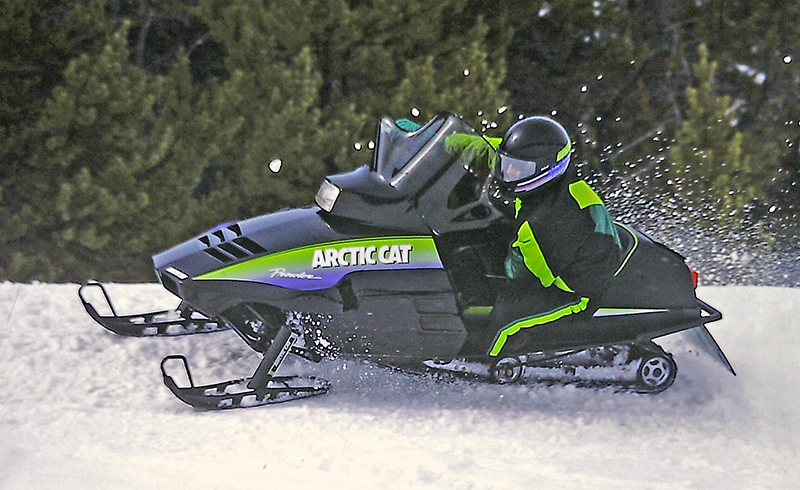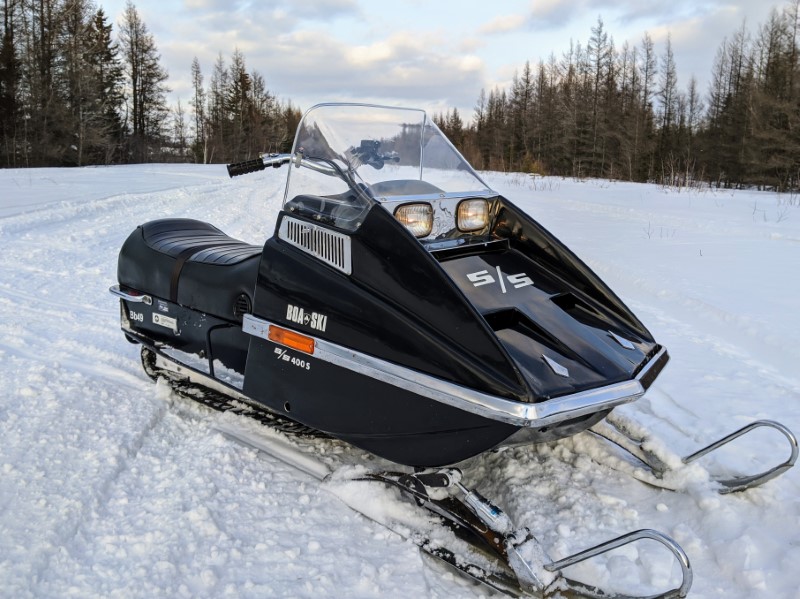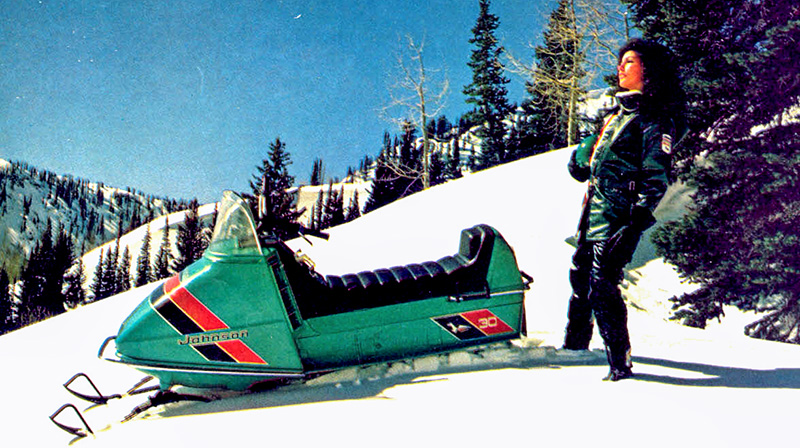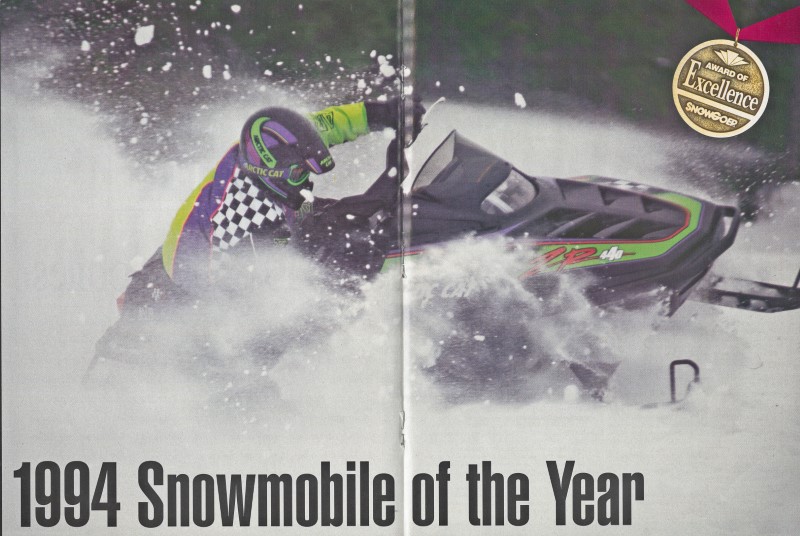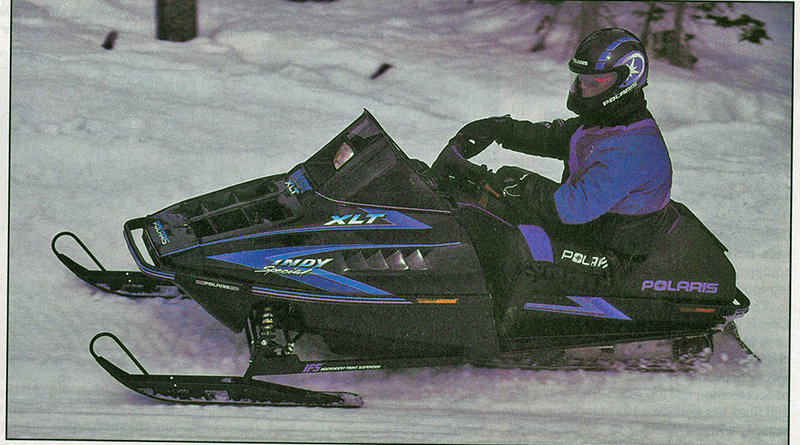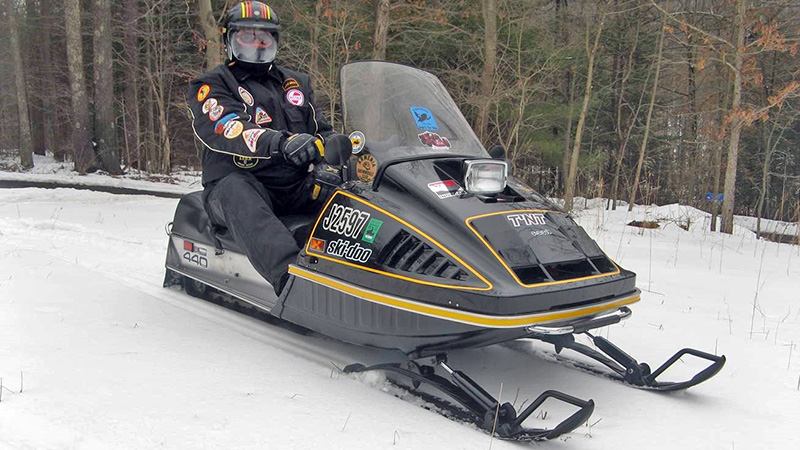 “Snowmobiles used to be pretty much the same … then came Skiroule.”
“Snowmobiles used to be pretty much the same … then came Skiroule.”
That line from the 1972 Skiroule sales brochure was no product puffery dreamed up by some advertising agency. The jaw-dropping new RTX absolutely revolutionized the way people thought about snow machines. It was the first snowmobile to emphasize appearance, liberally augmented by the use of beautiful women, as a primary feature to attract attention and win customers. Furthermore, these sleek new sleds also introduced engineering ideas that were subsequently adopted by other brands.
The Beautiful Difference
“Performance doesn’t have to look like a box… just look at Skiroule.”
Born in 1966 in Rejean Houle’s Quebec garage, Skiroule had resembled a green Ski-Doo because that’s pretty much what it was.
But in 1972, that all changed. Now owned by the Coleman Company of Wichita, Kansas, “Skiroule shook the industry with the sharpest styling ever” according to our Snow Goer predecessors.
The super-sleek new design was based on its successful 1971 factory racers who had taken the Mod 340 class at the Eagle River, Wisconsin, Snowmobile Derby and Mod 440 at the second annual United States Snowmobile Association World Series in Boonville, New York. The later was the first major victory for an unknown named Gilles Villeneuve.
Long and low, the sleek new Skiroule was highly aerodynamic while all the others were still ugly crates or tadpole shapes. Even the Skiroule headlight was covered with a streamlined, clear lens.
With the engine moved to a forward position, a much lower center of gravity took the acrobatics out of maneuvering even though Skiroule retained the leg-breaker stirrups from the old engine-in-your-lap layout. Comparative tip-over testing by Snow Goer verified that these low-slung beauties had some of the best side-to-side stability in the industry.
More new ideas included instruments mounted on the handlebars, externally mounted rear suspension for more travel and improved ride quality, and a completely enclosed engine console that, according to the brochure, “not only looks great but also reduces the sound of the engine.”
The premium RTX series featured slide rail suspension and full instrumentation, while the lower-powered RT series had bogie wheels. Most models had 15-inch wide tracks, but the top models in each series had higher-flotation 17-inch tracks, a common practice of the day for top-of-the-line offerings.
It certainly didn’t hurt that Skiroule often showed its rakish new design with attractive young ladies. Whether clad in one of Skiroule’s elegant snowmobile suits, their stunning White Lightning casual jump suit, or a floral print bikini, tastefully posed mademoiselles were definitely a big part of the marketing effort.
Consumer acceptance was quick, and the “green bullet” was voted Best in Styling in a poll conducted by Invitation To Snowmobiling magazine.
But The Beauty’s Only Skin Deep
My touring buddy, Ted Perkins, purchased an RTX 447 after satisfactory ownership of an earlier Skiroule. Problems began immediately.
Unlike its race sled predecessors with free air engines sticking out in the breeze, the RTX was subject to classic vapor lock with its fully enclosed, fan-cooled engine. “Out of the box, the new 447 always took many pulls and much playing with the choke to start, even when cold,” Perkins recalled. And restarting when warm was even worse, as I can attest from watching him on numerous occasions. “I just could not understand how the factory could have knowingly allowed the product to ship with these starting problems,” he said.
 Fixes began with removal of the wire mesh screens over the hood vents, and quickly proceeded to installation of a Grosse Jet in the carb. Clutching changes were also made. “The changes made a noticeable improvement,” Perkins said, “but the 447 was always somewhat temperamental starting or restarting. You had to know it.”
Fixes began with removal of the wire mesh screens over the hood vents, and quickly proceeded to installation of a Grosse Jet in the carb. Clutching changes were also made. “The changes made a noticeable improvement,” Perkins said, “but the 447 was always somewhat temperamental starting or restarting. You had to know it.”
Another design defect showed up later. Moisture would collect in the throttle cable and freeze, making the cable sticky and sometimes inoperative. “I would have to put my hands around any exposed part of the cable to loosen it up,” Perkins explained, going on to relate how this resulted ultimately in a stuck-throttle tree smash. “A test program should have found this design problem,” he said.
Still, he really liked his 447, calling it “an otherwise nice running sled;’ and rode it as his primary machine until 1980. “I do not recall any design problems with the chassis, suspension or front end,” Perkins said.
Down The Trail
Skiroule became a first-tier brand with its breakthrough design, but never really challenged the market leaders for dominance. However, the new Skiroule led to much more emphasis on styling throughout the industry, and enclosed engine compartments were soon standard practice to meet new sound emission restrictions. Handlebar mounted instruments and outboard rear suspension also showed up on other brands.
Coleman soon tired of the snowmobile business and sold Skiroule to a private owner who kept the basic RTX/RT platform in production relatively unchanged until the brand expired in 1977. By then its age was definitely showing, but its styling was still turning heads across the Snowbelt.
Editor’s Note: This Flashback article from International Snowmobile Hall of Fame writer David Wells first appeared in Snow Goer magazine. To see more of Wells’ great articles on interesting old sleds, plus in-depth new sled evaluations, aftermarket product tests, informative how-to story, interesting travel features, Snowmobile Science articles and much more, subscribe to Snow Goer magazine.

